6 Inspiring Ceiling Styles For Your Home
Here are some ceiling design ideas to inspire you on your day-to-day living.
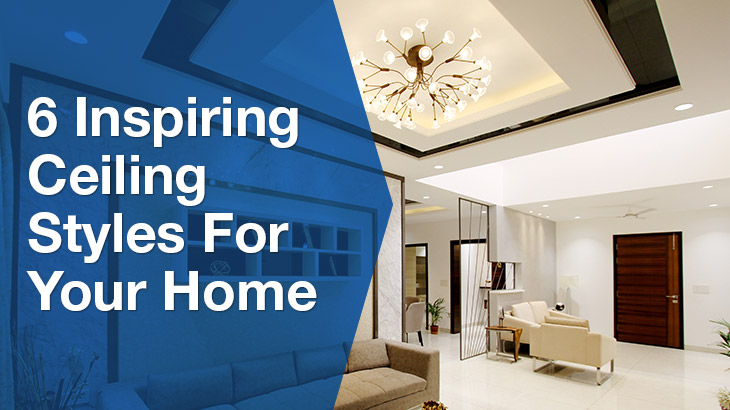
Picture this…
You’ve had a long workday, running around getting errands done. You’re tired and sprawled across your couch or bed. Whichever’s closest to you at that point. You don’t want to think about anything else you have to do today. You open your eyes to look up and you smile.
What makes you smile?
It’s your ceiling.
You’re overcome by a sense of peace and tranquillity. You like what you see.
You like it because you chose the ceiling you’re looking at. It’s your dream ceiling in your dream home.
You’re finally home.
This is what a great ceiling should inspire from you. A smile.
It should also get reactions from anyone who comes into your home.
Here’s a list of six inspiring ceiling styles you should keep in mind when renovating or building your dream home.
Beamed Ceilings
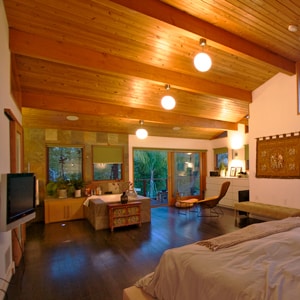
Image from: Jeremy Levine
Beamed ceilings are amazing to look at. They give your home a sense of flair and warmth.
They are sure to capture your guests’ interest and bring depth into whichever room you have them in.
These ceilings consist of exposed beams or joists. The most common material for these is timber. Though they can also come from other materials like foam, plastic, metal and more.
Your beams can come in different shapes. Curved, lofted or the familiar straight structure.
Types of beam ceilings include:
- Polyurethane: lightweight but strong and ideal in case of earthquakes.
- Boxed: structured in a square pattern.
- Hammer: vertical and horizontal beams supporting the roof.
- Faux wood: also lightweight even though they give the impression that they’re heavy.
Installing beamed ceilings is a good choice for:
- Adding resale value because of the visual impression it gives
- Decorating your home and increasing its appeal
- Occupying the extra space you have with high ceilings
Though, at the same time, beam ceilings can:
- Create less insulation, leading to higher costs in cooling and heating
- Cost a significant amount to install for a quality standard from professionals
Vaulted Ceilings

Image from: Anna Spratt
The vaulted ceiling is more of an old-style and yet it’s still appealing in modern spaces. It projects a grandiose space.
Vaulted ceilings are also known as cathedral ceilings. This is because of where they first appeared. During the Medieval era in Europe, only cathedrals had vaulted ceilings.
They consist of arches on high or raised ceilings. In fact, any ceiling higher than two and a half metres is a vaulted ceiling.
There are different types. These include:
- Barrel vaults: these look like the inside of half a barrel and date back to Ancient Egypt.
- Dome vaults: dome shapes are simple in appearance and date back to around 6,000 BCE.
- Rib vaults: these look like dome ceilings with ribs. They are more complex in their construction.
- Groin vaults: created by intersecting two half-barrel vaults. They aren’t easy to construct.
- Modern vaults: constructed with hyperbolic paraboloids.
You should consider vaulted ceilings if you’re looking to:
- Add elegance to a room
- Make a room appear bigger
- Increase the amount of natural sunlight into a room
Keep in mind that these styles are expensive and hard to build. They are also hard to clean because of their height.
Crown Moulding
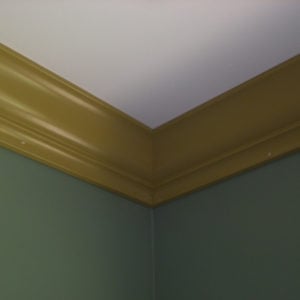
Image from: Joel
Crown moulding forms a great transition between your walls and your ceiling. It creates elegance and gives your room a polished feel. Your room ends up looking distinguished like ancient Greece where it originates from.
Crown moulding comes in various materials. These include:
- Plaster: a heavy material which needs professional instalment.
- Wood: light and flexible.
- Polyurethane: heavier than wood but also flexible.
- Foam: this can come with a thin acrylic plaster coating or come from polyurethane.
- Vinyl: this protects against moisture.
When thinking of getting crown mouldings for your home, it’s important to consider:
- The height of the ceiling to figure out the right length of the crown
- The kind of trim already in your house
- The room itself and what it’s used for (dining room, living room, etc.)
Crown moulding can come in different styles like:
- Victorian (late 19th Century)
- Contemporary ( mid 20th Century)
- Colonial (the earliest type of crown)
- Arts and Crafts (early 20th Century)
Traditional Ceilings
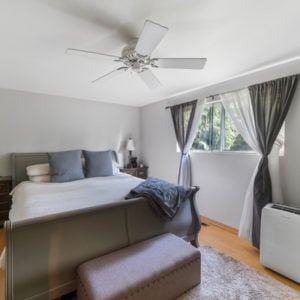
Image from: Im3rd Media
This is the type of ceiling present in most homes. It’s likely the ceiling you have now.
So you might think, “What’s so special about a flat ceiling?”
Your traditional ceiling doesn’t attract anyone’s attention at first sight. At least for now.
But you can make changes to make it more appealing.
It all depends on your choice of finish and paint.
You can paint your ceiling in bright colours. Colours that incite emotion.
You can also use different finishes including:
- Artex: this coating allows you to create your own designs depending on the brush or tool you use.
- Drywall: affordable and easier to apply than plaster. Drywall comes in a variety of finishes:
→Plaster Stenciling
→Mud Swirl
→Popcorn
→Smooth
→Skim Coating
- Plaster: a finish made from plain cement, it’s the most used, oldest and known finishing in modern times. You can apply plaster through different techniques like:
→Roughcast Plaster
→Pebbled Dash Plaster
→Sand Plaster
You can also think about using wallpapers or textured paint to bring life to your ceiling.
Sticking to a flat ceiling also has its advantages which include:
- Easy to build
- Functional
- Not expensive
- Encourages your creativity
Coffered Ceilings
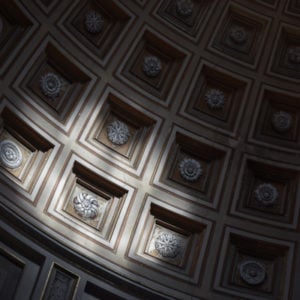
Image from: Rebekah Rabon
Coffered ceilings consist of sunken panels surrounded by beams in geometrical patterns. These patterns can include squares, rectangles, octagons and more. There’s no limit to the number of shapes and patterns you can come up with.
The word ‘coffer’ comes from the French word ‘coffre’ which translates to box in English.
Coffered ceilings come in different materials like:
- Plaster
- Foam
- Fiberboard
- Different woods
They also come in different styles including:
- Rustic: this consists of wood beams designed to form rectangular or square patterns.
- Contemporary (or coastal): this is a more minimalistic pattern.
- Geometric: this style consists of different shapes like triangles and hexagons. Crown moulding decorates the beams in this style.
Coffered ceilings are great if you want to:
- Reduce noises and echoes, giving you peace and quiet
- Make your ceiling appear taller than it is
- Add beauty to your room
- Hide flaws or damage to your ceiling
- Give your home a sense of structure
This ceiling option is one of the most eye-catching and ornamental ones. It gives a sense of class to your room and you find it often in hotels and modern homes.
Tray Ceilings
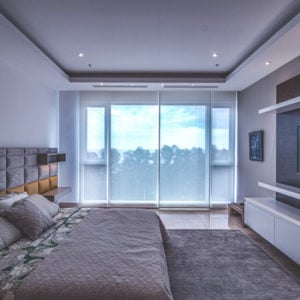
Image from: Felipe Hueb
Tray (or inverted) ceilings have raised centre sections. Think of an upside-down tray.
Tray ceilings can have contrasting colours between the centre and their surrounding parts.
They come in different shapes, though in most cases it depends on the shape of the room. Tray ceilings usually follow the contours of a room and most rooms are rectangular or square.
They can come in different designs including:
- Murals and Stencils: using the centre section to create a canvas.
- Double Tray: ideal for rooms with high ceilings, creating two tiers of trays.
- Light as the Focal Point: placing a chandelier or ornamental lights at the centre of the room.
- Textural: giving it more appeal through different textures.
You should consider a tray ceiling if you want to:
- Add height to your room and make it seem larger
- Have a functional ceiling
- Have a combination of colours on your ceiling
They are perfect for high ceilings in large rooms. They give the impression that your ceiling is three-dimensional.
Install Your Dream Ceiling
You’ve seen some great ceiling styles for your home. Now it’s time to think about installations and renovations.
Change your plain old ceiling and make it unique. Make it interesting.
